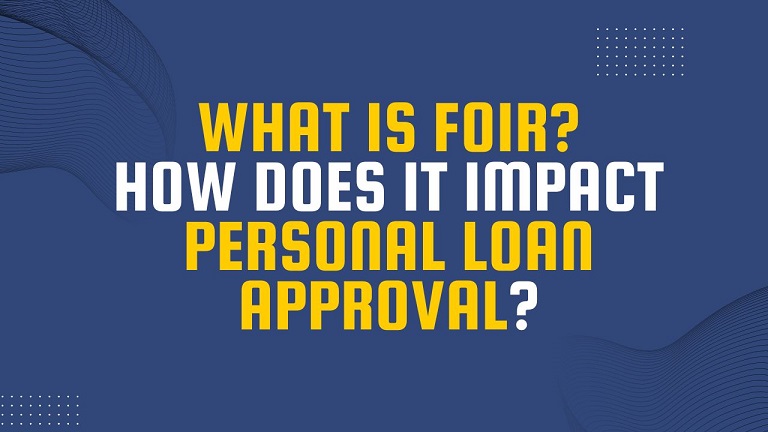What is FOIR? How does it impact personal loan approval in 2024?
When you apply for a personal loan, you’ll encounter various terms and factors determining your eligibility.
The FOIR (Fixed Obligation to Income Ratio) is a crucial factor. This article will explore FOIR, how it works, and its impact on your ability to secure a personal loan.
Understanding FOIR
Fixed Obligation to Income Ratio, is a financial metric lenders use to evaluate a borrower’s ability to repay a loan.
It measures the proportion of a borrower’s fixed financial obligations (such as loan EMIs, rent, and other recurring payments) to their monthly income.
Fixed Obligation to Income Ratio helps lenders assess whether an individual can comfortably manage additional loan repayments while meeting their existing financial commitments.
How FOIR is calculated?
The FOIR is calculated using a simple formula:
FOIR = (Total Fixed Obligations) / (Monthly Income) * 100
To calculate your FOIR, add up all your fixed monthly obligations, which typically include:
Loan EMIs include payments for existing loans like home loans, car loans, or any other personal loans.
Rent or Housing Loan EMI: If you’re repaying a home loan, the EMI for it is also considered a fixed obligation.
Credit Card Payments: The minimum payments due on your credit cards are included.
Other Fixed Payments: Any other recurring payments, like insurance premiums or subscription services, can also be factored in.
Next, divide this total by your monthly income, which should include your salary, business income, or any other regular source of income.
The resulting percentage is your Fixed Obligation to Income Ratio, indicating how much of your monthly income is already committed to fixed obligations.
Impact on Personal Loan Approval
FOIR plays a significant role in the personal loan approval process, and it can impact your eligibility in the following ways:
Eligibility Assessment: Lenders use Fixed Obligation to Income Ratio to assess whether you have sufficient income to cover your existing fixed obligations and the additional EMI of the personal loan you’re applying for.
Loan Amount: A lower FOIR percentage indicates that you have more disposable income after meeting your fixed obligations. This can lead to a higher loan amount approval.
Interest Rates: A favorable FOIR might help you secure a personal loan at a lower interest rate, as lenders perceive you as a lower-risk borrower who can comfortably manage repayments.
Tenure Consideration: If your FOIR is relatively high, some lenders might consider extending the loan tenure to lower the EMI burden, which could result in paying more interest over the loan term.
Credit Score Impact: Maintaining a low Fixed Obligation to Income Ratio can positively impact your credit score, indicating responsible financial management and the ability to handle credit.
How to Improve FOIR?
If your FOIR is high and you want to improve your chances of the personal loan approval, consider these strategies:
Reduce Existing Obligations: Try to pay off or reduce your existing loans and credit card balances to lower your fixed obligations.
Increase Income: Increase your income through additional sources or a salary raise.
Choose Longer Tenure: Opt for a longer loan tenure when you are applying for a personal loan to lower the EMI amount.
Conclusion
FOIR, or Fixed Obligation to Income Ratio, that is a critical factor that lenders use to assess your creditworthiness when you are applying for a personal loan.
By understanding how FOIR is calculated and its impact on loan approval, you can take steps to maintain a favorable FOIR and increase your chances of securing the personal loan you need.
Responsible financial management, including your fixed obligations, is key to maintaining a healthy FOIR and a strong financial profile.
Thank you for visiting Jobs Ada




